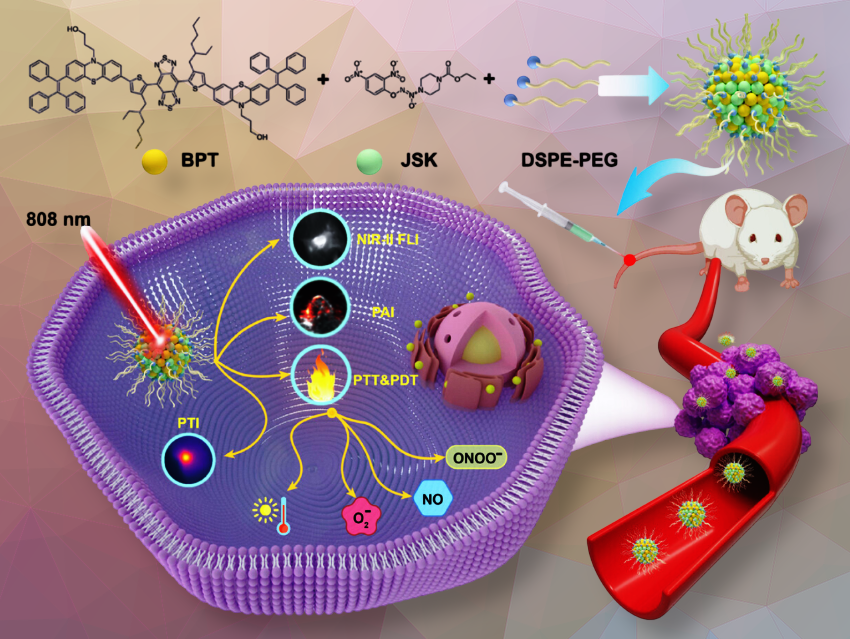Bo Zhang, Southern University of Science and Technology, China, and colleagues have developed a new aggregation-induced emission (AIE) molecule named BPT. By integrating strong electron-donating phenothiazine units into a tetraphenylethylene core and coupling it with a benzobisthiadiazole (BBTD) acceptor, the resulting BPT nanoparticles exhibit NIR-II fluorescence emission at 1083 nm (quantum yield: 1.53%), 63% photothermal conversion efficiency, photoacoustic imaging capability, and generation of type I reactive oxygen species (O₂⁻).
The team further co-encapsulated BPT with the nitric oxide (NO) donor O2-(2,4-dinitrophenyl) 1-[(4-ethoxycarbonyl) piperazin-1-yl]diazen-1-ium-1,2-diolate (JSK) into 1,2-distearoyl-sn-glycero-3-phospho-ethanolamine-methoxy poly-ethylene glycol2000 (DSPE-PEG2000) nanoparticles. These JSK-BPT nanoparticles (NPs) produce O₂⁻, NO, and ONOO⁻ upon irradiation, enhancing phototoxic effects. In vitro, JSK-BPT NPs eradicated most tumor cells at low concentrations under 808 nm laser exposure. In a 4T1 breast tumor mouse model, BPT NPs enabled high-resolution multimodal imaging of vasculature and tumor sites. Under the multimodal imaging guidance, a single dose of JSK-BPT NPs combined with laser irradiation led to complete tumor ablation.
This work extends the NIR-II emission capabilities of AIE materials and demonstrates a multifunctional platform for integrated imaging and phototherapy, addressing key challenges in tumor precision treatment and microenvironmental targeting.
- An Efficient Heat and ONOO⁻ Generating Nanoplatform for Multimodal Imaging-Guided Precision Tumor Phototherapy,
Ziyi Xu, Mingkun Lv, Jingkai Yang, Tingting Li, Jiahui Lv, Jiaxin Li, Hongjun Xiao, Yicheng Yang, Siyu Zhou, Xuan Tan, Li Cheng, Heng Guo, Lei Xi, Pan-Lin Shao, Bo Zhang,
Aggregate 2025.
https://doi.org/10.1002/agt2.70040





